Fibery vs. Notion 2025: not Better, Just Different
- 🐼 What Notion is great for?
- 🐉 What Fibery is great for?
- Notion building blocks
- Fibery building blocks
- Networks and relations
- Page inside Database vs. Database inside Page
- Scale
- Permissions & Access
- Whiteboards
- Automations
- Fibery unique features
- Use Case: Product Management
- Notion vs. Fibery quick comparison table
- Conclusion
Disclaimer: This post is written by Fibery Founder, so it is inevitably biased (but I tried to be as objective as I can).
You came here to find out how 🐉 Fibery is better than 🐼 Notion. Well, it is not. Fibery is different. Notion is a great tool and it works exceptionally well for some use cases, but it fails for others. Let me just quickly answer your main question and then feel free to dig into details later.
🐼 What Notion is great for?
- Personal knowledge management (PKM)
- Company wiki and knowledge base
- Simple (not complex) processes: basic project management, basic CRM, basic candidates tracking, etc.
“I’ve been using Notion for the past few years. It’s undoubtedly the most flexible note-taking app on the market. Offering both simplicity and complexity, it caters to a variety of users. Its recent integration with AI and automation further elevates the note-taking experience. Imagine having your own personal Wikipedia, comprehensive databases, calendar, tasks, calculator, and more, all within a single app. This truly makes Notion the best of the best.” — Notion user
🐉 What Fibery is great for?
- Company wiki and knowledge base
- Complex processes: product management, feedback management, portfolio management, OKR, HR, Vacation tracking, etc.
“We use Fibery to manage all our startup processes, from customer discovery over HR until CRM, Project management and documentation. We could replace 27 of our 36 internal tools: Fibery is a rocket for managing all sorts of processes and lets us the freedom to create our own templates and spaces aka processes, if needed.” — Fibery user
It can be illustrated like this:
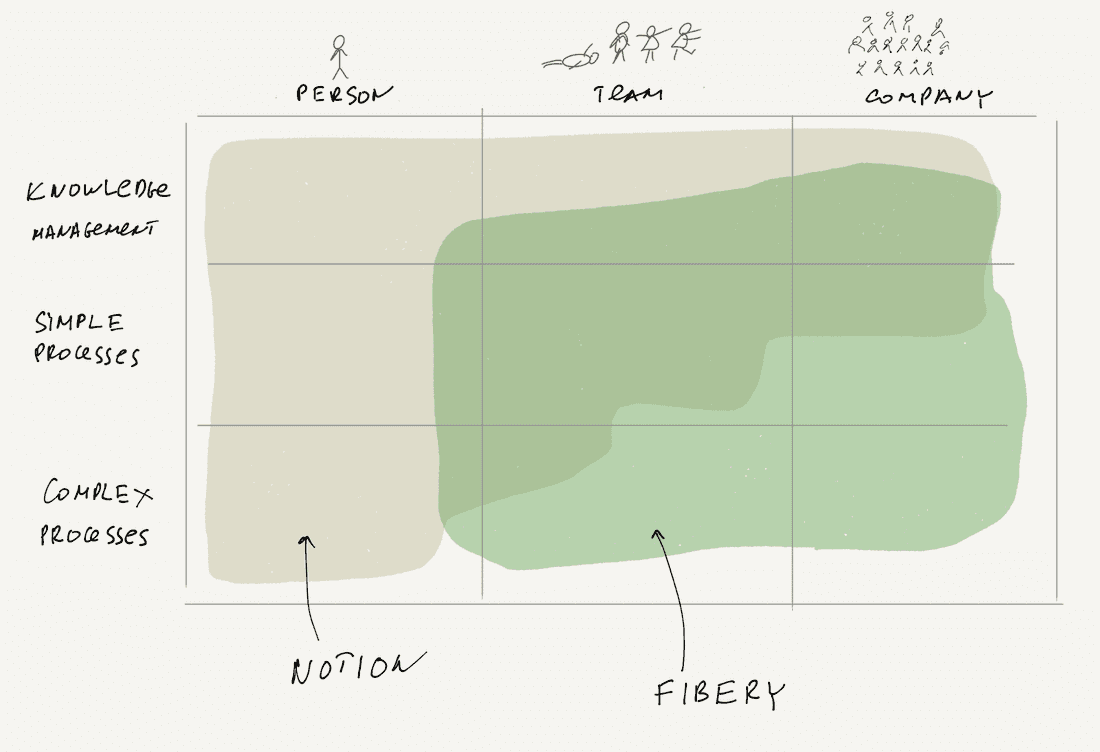
Fibery will help you when Notion is just not enough. When you need deep hierarchies and relations, advanced access and permissions control, formulas and automations across these hierarchies, visualization of information in hierarchical timelines and table views, complex charts.
In general, Fibery is harder to “get” and master. However, power is rewarding. You can build solutions to complex processes, and still enjoy good UX and interactions.
🐉 🔴 “The UI is a bit overwhelming, especially compared to Notion. There’s a lot to learn, which can be frustrating at first.” — Fibery user
Some mottos that may resonate with you:
- Fibery = Notion + Airtable
- Fibery — when Notion is not enough
- Fibery — Notion for complex things
Notion is a well-known tool, so in this post you will read more about Fibery than Notion. In 2020 I also did a comparison, but time flies, Notion got enormously better, and Fibery got significantly better. So let’s dig into building blocks and tools philosophy. We’ll start from quite abstract things and get to more concrete use cases later.
Notion building blocks
Almost anything in Notion is a Page. Folder is a Page. Document is a Page. Databases is a Page. Database Entity is a Page.
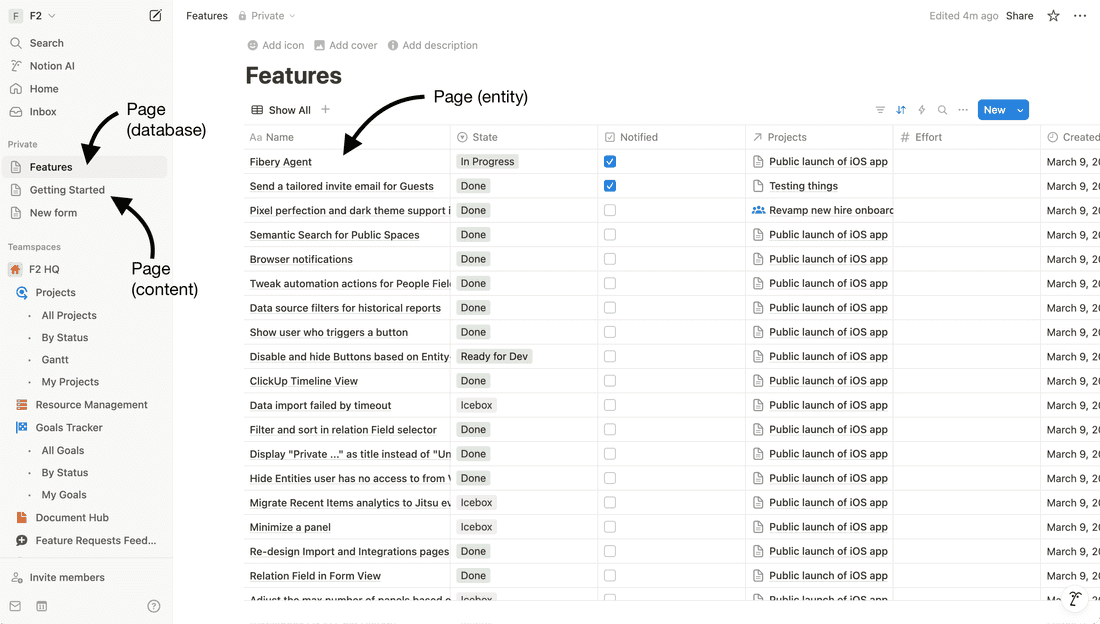
You don’t need to master complicated vocabulary. You simply take a fresh page and turn it into whatever you need: a text document, a customer list, a meeting calendar, or even a gallery of app mockups. It’s not an entirely blank canvas—some structure is essential to prevent chaos—but that’s exactly where Notion shines, striking the good balance between flexibility and simplicity.
Recently more abstractions were added, like Teamspace (to group some processes together), and more types of Pages (Forms). Anyway, Notion is pretty consistent with “everything is a Page” approach.
Fibery building blocks
Fibery is a set of connected Databases. Major concepts in Fibery are: Database (with relations), View, and Document. There are more secondary concepts, like Folders and Spaces.
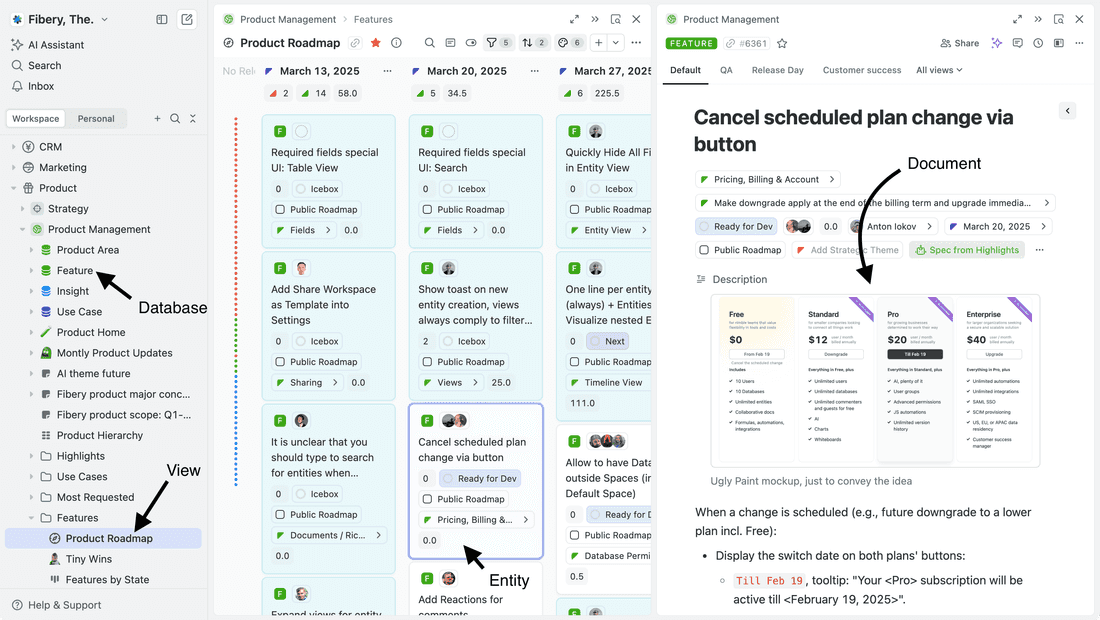
In Fibery you usually start with a Database and then create Views to work with the data. It’s more abstract than in Notion, so the learning curve is steeper. You can’t just create pages and do things, you have to think about what structures you need in some details.
Translation sheet:
Notion — Fibery
Workspace — Workspace
Teamspace - Space
Database — Database
Property — Field
Card/Page — Entity
View — ViewIn Notion, a Page contains Databases that contain Pages, in Fibery, a Database contains Pages 👉 👈.
Networks and relations
Networks are essential. Understanding what they are and how they work can unlock incredible opportunities across business, personal success, science, etc. That’s why any tool designed to help organize your personal or company information should support networks, allowing you to connect information with networks and hierarchies (a hierarchy is simply a specific type of network). On top of networks you’ll have everything else: Views, Access levels, Formulas, Integrations and Automations.
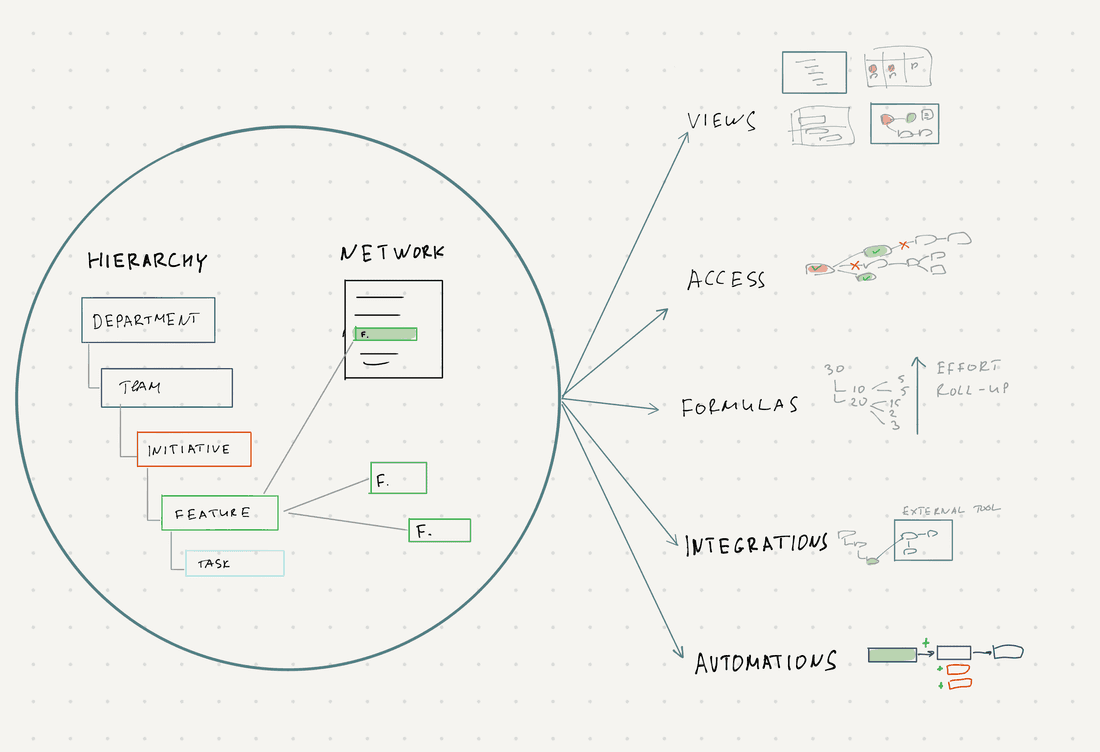
In Notion relations are very limited. It is not possible to visualize hierarchies, provide access via relations, you can’t rollup a rollup, or create automation rules that exploit such structures. There are many many limitations that are not so important for simple processes, but are very important for more complex processes. For example, to see related info in context, you often have to create a filtered view or a rollup. Imagine you want to view all Tasks for a specific Client: in Notion you’d likely open the Client’s page and insert a linked database of Tasks filtered by that client.
Relations affect performance in Notion quite significantly. One of Notion’s engineers said:
🐼 🔴 “The biggest thing that can make a database break is that we store relations as lists of page IDs, on the relation property itself, so if you have a single record that’s related to 10,000 other records, that can have adverse effects.” — Notion expert
Notion in general is simpler than Fibery, but Relations in Notion are more complex, because it always feels like they were built as a set of workarounds.
In Fibery relations are the core of your workspace. This enables more sophisticated data modelling, which is great for teams that need to manage interconnected data. You can build deep hierarchies (like Department → Team → Initiative → Feature → Task) or connected databases in different spaces.
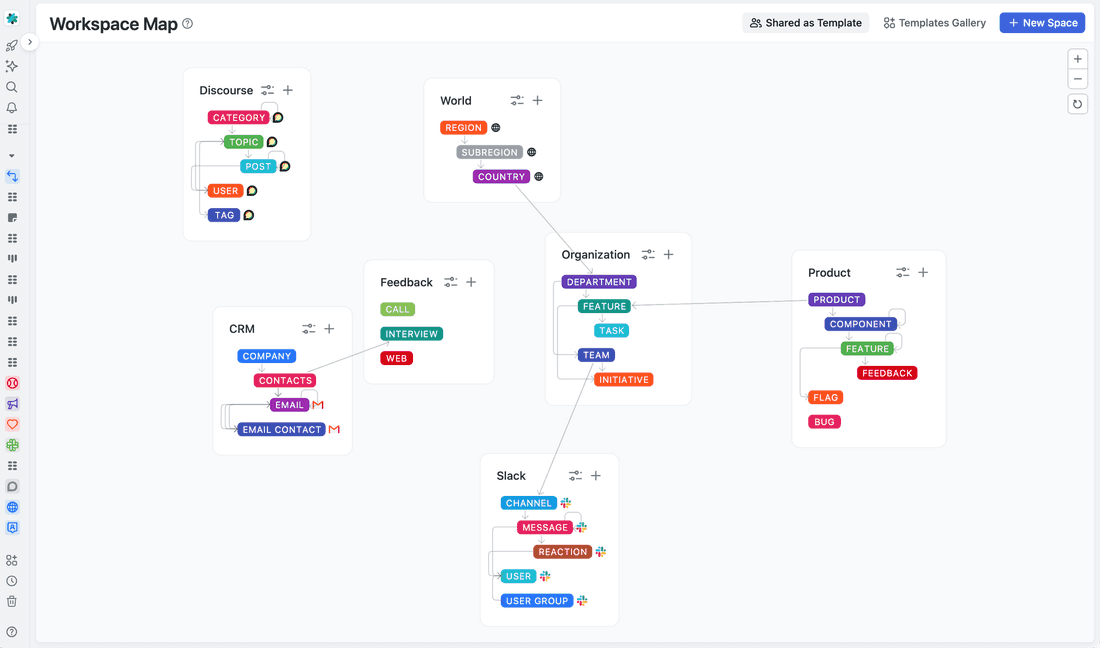
This is just a start. The real value is revealed when you visualize it via views and see all levels, configure access to data via relations, create formulas to calculate things, integrate it into the network of external tools.
Hierarchies and relations visualization
Notion can’t handle and visualize deep hierarchies. You can visualize two levels, but no more. Self-relations are also hard. Implementing recursive rollup and formula fields to display all descendants of a task can cause prolonged loading times and may fail when the hierarchy exceeds four levels. Sub-items is a very bad solution for cross-databases hierarchy and it just doesn’t work.
🐼 🔴 “I just find it too messy to put my larger projects in the same database as tasks unfortunately, which is the only way to show a sub item now (as far as I can tell) There’s too many properties that aren’t relevant and it requires to many games with filters in 50+ places (it’s a team setup).” — Notion user
Fibery can go as deep as you need.
🐉 🟢 “A real benefit in Fibery is you can group by relations, which is a huge request of Notion that I also have. I’m not optimistic they can solve this since their relations are always many-to-many. So I imagine it is a huge architectural challenge to make these type of relations into columns in board view, for example.” — Fibery user
For example, here is a Table View where you can see Product Areas, Features and Insights. Note that you can visualize recursive self-relations easily and there is no really any limit in depth.
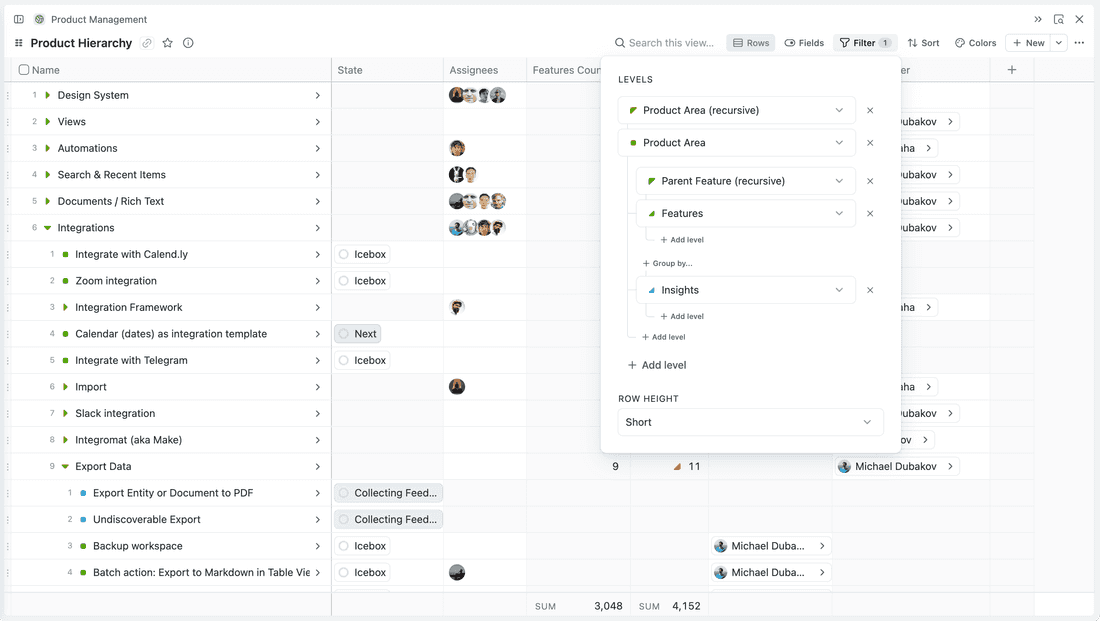
Overall, for individuals or small teams doing straightforward projects, Notion’s relations can get the job done. You can connect tables and even create some cool dashboards with a bit of effort. But if you’re an organization that thrives on seeing how everything ties together – e.g. a software company linking customer feedback to features to development tasks, or a content team linking social media posts to campaigns to outcomes – Fibery provides a better relational system to make that happen with less manual work. In Fibery, “relations” aren’t just links, they’re a living network of data.
Page inside Database vs. Database inside Page
In Notion, a Page contains Databases. This structure allows users to embed databases alongside various content types and works great for note taking, basic knowledge management and collaborative docs.
In Fibery, a Page is just a Field inside a Database entity, so you have to think in terms of databases from the beginning. It confuses people who come to Fibery from Notion. It makes Fibery less fluid to start with, but also less chaotic than Notion in the end.
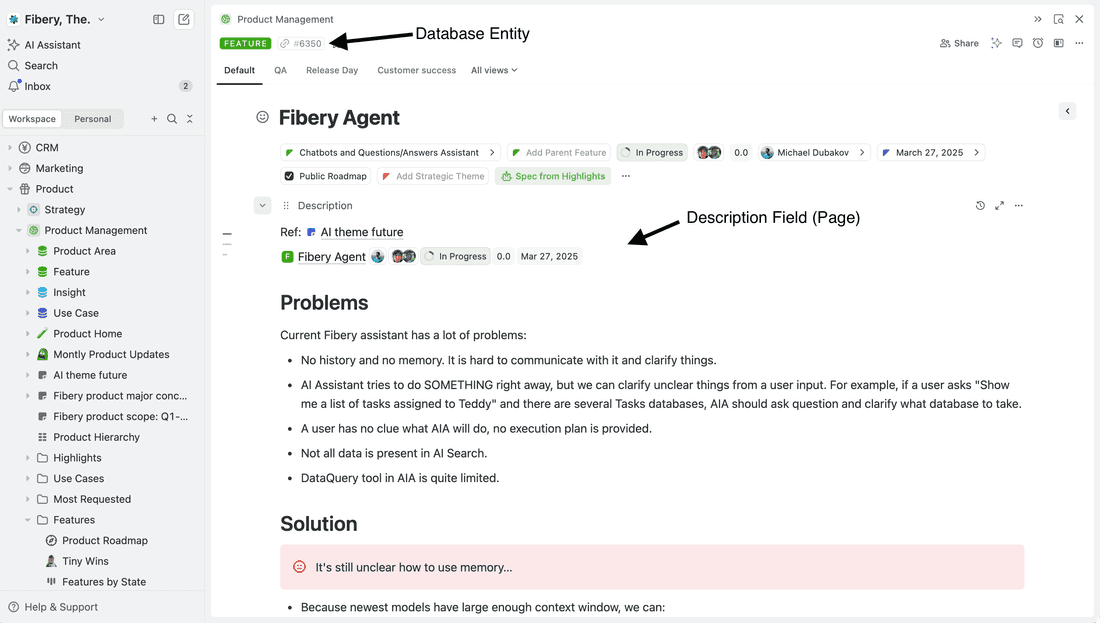
🐼 🟢 Notion text editor is a piece of art. It is very powerful, supports layouts and blocks, so you can create very complex pages from many blocks and it somehow almost always looks good 😍.
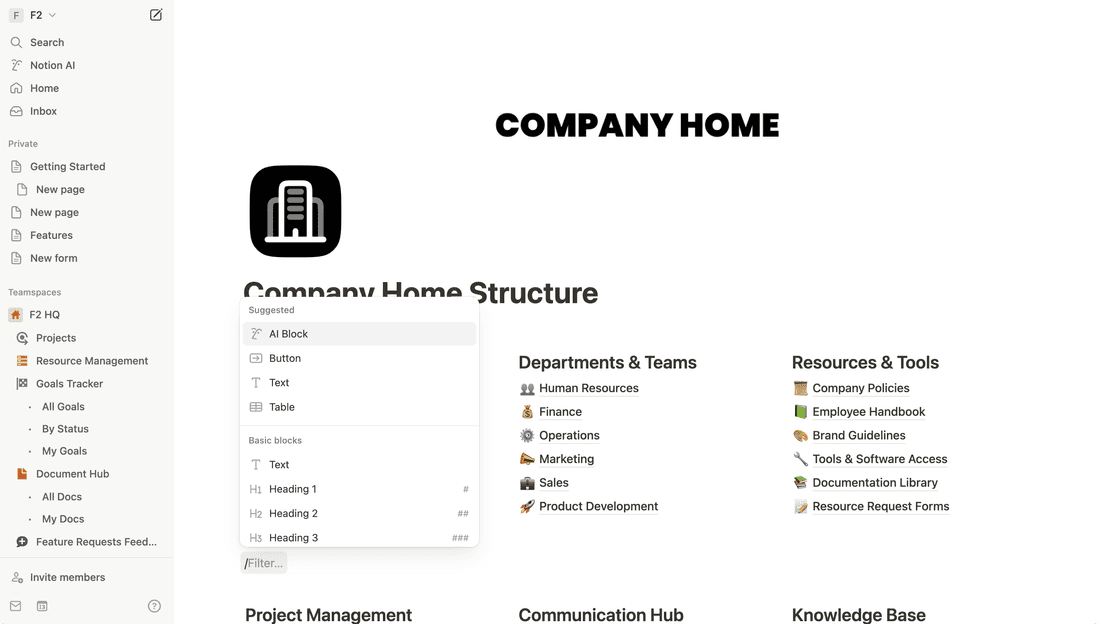
In Fibery the text editor is OK, but it lacks some polishing details and power (although entity mentions with visualised properties are better). For example, it is hard to drag and drop things around, it has less customization options, no reminders, no buttons, no toggle block. In most cases though, the Fibery text editor is good enough for documentation.
Scale
How well Notion scales? Limits are not publicly available, but we do have some evidence. It seems Notion supports up to 30-50K rows per database (or more), but it does not work very well in some cases:
🐼 🔴 “I’ve got a database with close to 10k entries. It’s slow as shit but not encountered a limit or anything” — Notion user
Other users don’t have problems:
🐼 🟢 “I have a database that I use like Pocket, and it has over 30K pages. it works perfectly fine. I can filter and display the data I need with ease!” — Notion user
It seems database complexity affects performance greatly. For simple database it can be more than 30K, but for complex databases even several Ks can be slow.
Notion has a limit for synced databases as well — 100 synced databases at 20,000 rows.
What about Fibery? Fibery handles 300K rows per database and can go up to 500K if there aren’t many complex relations. Here are the top 10 Fibery customers based on row counts across all databases. As you see, some accounts even exceeded 2M records.
Top 10 Fibery customers based on row counts across all databases
Databases Entities Count
-- --
23 2,721,287
43 2,000,236
11 1,853,729
54 1,601,056
101 1,590,891
41 1,497,955
227 1,139,642
77 1,127,377
31 930,132
33 855,150For external tool integrations, the limit is 250K rows per sync’d database.
Fibery supports 1000 databases in a single workspace (and we do have customers who want more, but we have resisted increasing this limit).
Permissions & Access
Notion is a powerful all-in-one workspace, but its permission system has several limitations when it comes to fine-grained access control. Notion does not support granular permissions within a database. All pages (items) inside a database inherit the permissions of the database page itself, and you cannot selectively share or hide individual entries from someone who has access to the database. As one expert puts it:
🐼 🔴 “Notion does not support granular database permissions. You cannot share a filtered subset of a database without sharing the entire database.” — Notion expert
In practice, if you give a user access to a database (even as a guest with minimal rights), they can potentially see every record in that database.
Notion has introduced features like Groups and Teamspaces to help manage permissions for collections of users. While these help organize users, they don’t change the fundamental constraints.
🐉 🟢 The Permissions and Access system in Fibery is the most flexible on the market, since it uses relations to propagate and configure access and edit capabilities. For example, with Department → Team → Initiative → Feature → Task you can give a user access to some Department and all its nested entities (teams, features, etc). Or you may want to give access to a single Team and all things below. Or even to a single Task.
A permissions system of this flexibility is extremely hard to design and implement. The Fibery team spent 4 years on it to get it right (and we are still working on it) and it is only possible to create when you have proper relations support. See how everything gets back to the Fibery core of connected databases.
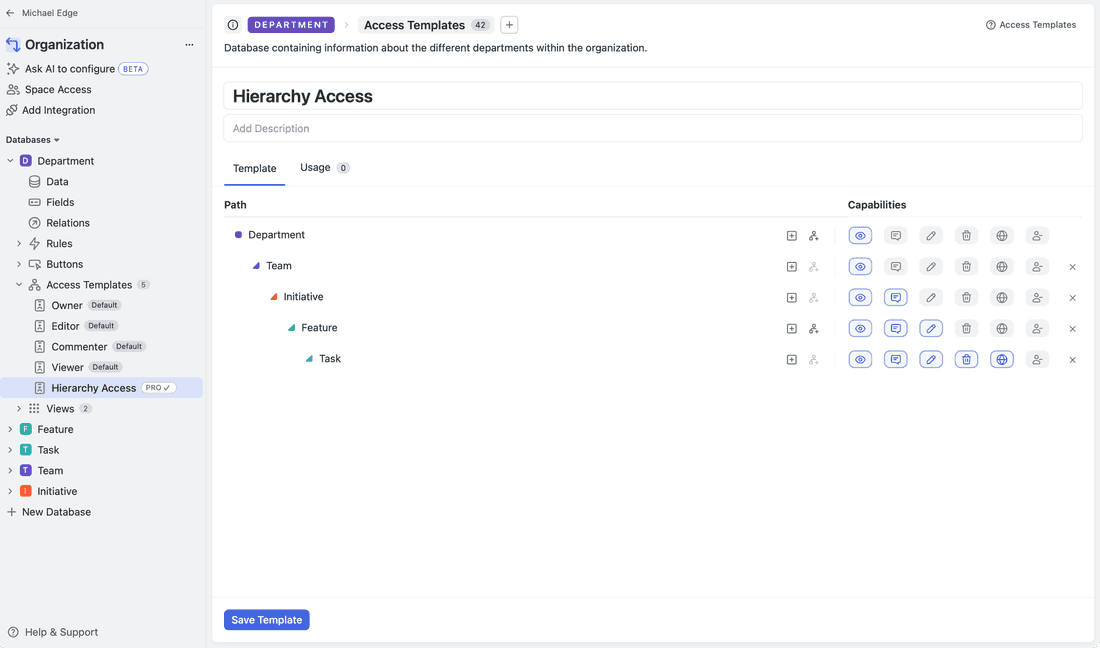
Whiteboards
Fibery’s Whiteboards offer a dynamic canvas for teams to brainstorm, visualize, and organize ideas seamlessly. Unlike standalone diagramming tools, Fibery’s Whiteboards are deeply integrated within the platform, allowing for direct interaction with your data.
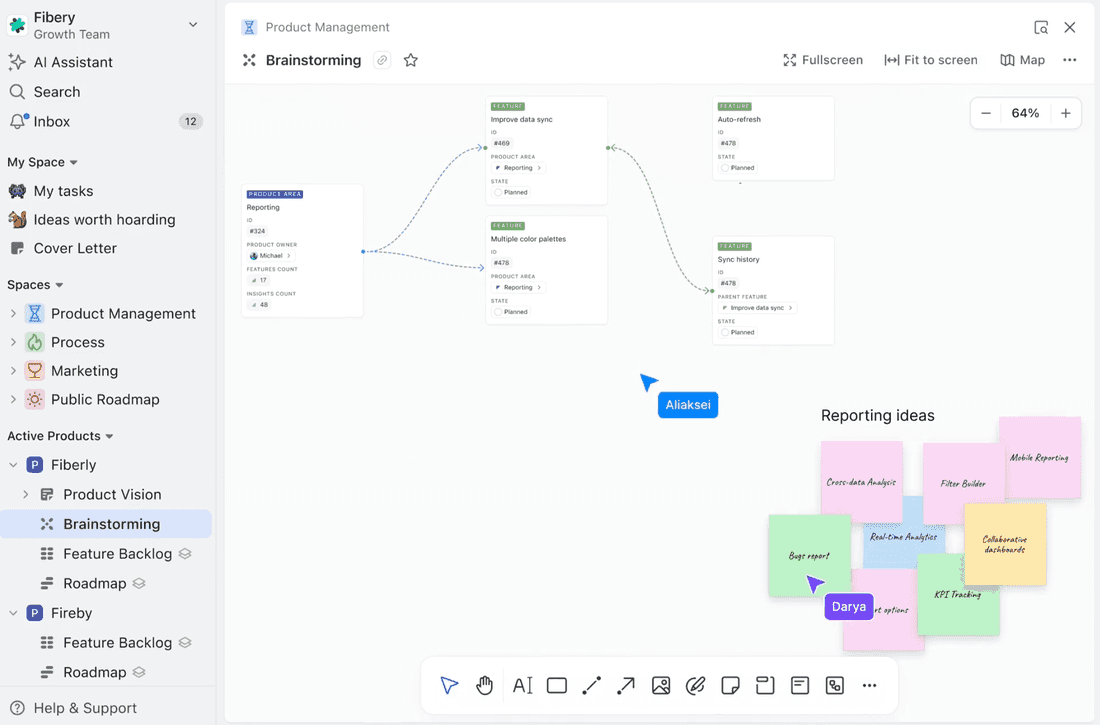
You can have real database entities such as tasks, features, and projects on your Whiteboards. This means you can move, connect, and interact with these entities just like any other element on the canvas, bridging the gap between planning and execution. Connected boxes become real features and tasks with few clicks.
🐉 🟢 “By the way, I have to say that the Whiteboard and Document feature integration within a row ie. epic, task etc. is an absolute game changer.” — Fibery user
Notion does not have Whiteboards yet, but I’m 100% certain they will be added eventually.
Automations
In Notion automations are easy to setup, but they are not very powerful (well, this is becoming a common theme for Notion vs. Fibery 🧐). You can define rules for a database, react on field changes or have scheduled rules, and execute actions like update fields, create new pages and send notifications.
🐼 🔴 Notion has some weird limitations. For example, Notion can’t trigger a rule when a formula value changes.
Actions in Fibery are more powerful, you can work with related entities in a very flexible way and set fields via formulas. For example, in hierarchy Initiative → Project → Tasks you can update all tasks linked to a project easily or updated fields of initiative from project rule as well.
UI is not always enough. In complex cases you can even create automation scripts with help of AI. Here is some feedback:
🐉 🟢 “With automations (true custom code you can append to any object), it’s almost infinitely extensible. The only two concerns I’ve had are a) the obvious startup curve; and b) bc it is truly unopinionated” — Fibery user
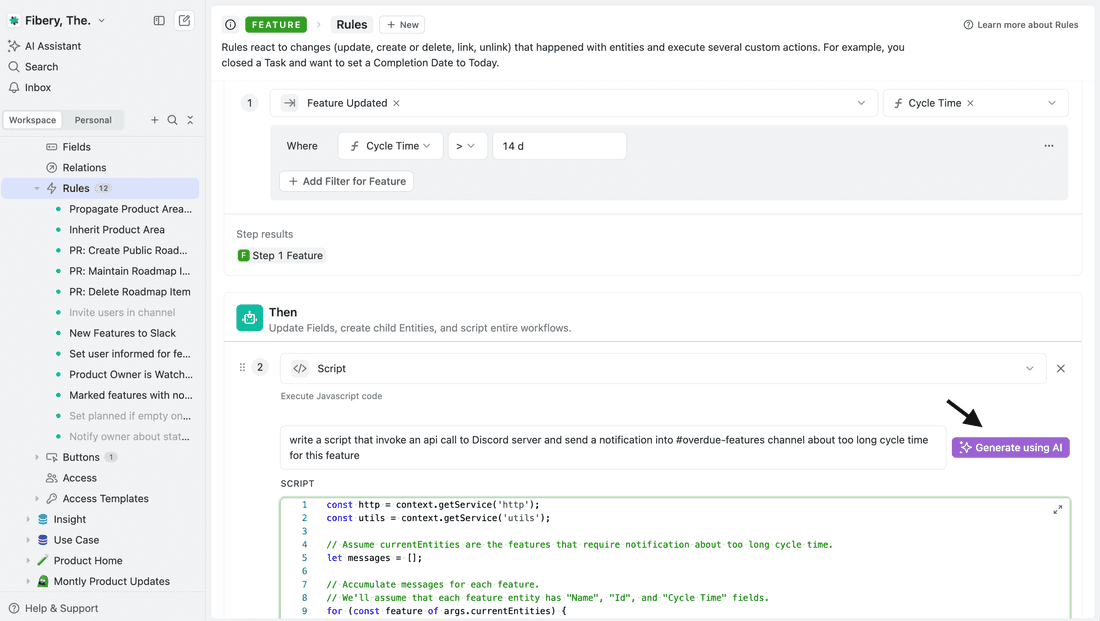
Fibery unique features
Fibery has several quite unique themes and features that help to tame processes complexity. But first let’s talk about transparency and releases cadence.
Weekly releases
In Fibery we release every Thursday (with very rare exceptions), check for yourself. We try to release a lot of value every week and we listen to customers.
2021 2022 2023 2024
-- -- -- --
🦋 Releases 34 → 40 → 45 → 51
💚 Done Features 100 �→ 200 → 300 → 450
🦐 Fixed Bugs 900 → 1200 → 1300 → 1400Here are two quotes to help you get the gist of the updates:
“It’s insane how good this release is! ❤️
Honestly, every single improvement is something we’ve been waiting for. This is so awesome! Huge thanks, guys – you’re the best!” — Fibery user
and
🐉 🟢 “I think you should pat yourself, and the entire team, on the back. This is an incredible achievement. One of the best things about Fibery is that it feels like it’s always improving. With Notion I had no idea what to expect and when. With Jira we had ONE LITERAL DECADE waiting for something as simple as summing up story points per epic.” — Fibery user
Smart Folders
Sometimes Views and Pages are not the best way to structure navigation. Smart Folders show a nested list of entities in the sidebar, and allow you to create automatically filtered Context Views inside entities. For example, you can list your Teams and create a single View that will automatically filter work by Team. Here we have a high level Strategic Initiatives and Features Progress board that was created just once, but works for all current and future Strategic Initiatives:
Customizable mentions
In Fibery you can customize how entity mention for every database looks. For example, here we have many Features mentions and we can choose to show the Product Area for every feature with few clicks:
Multiple entity views
Multiple Entity Views allow users to create and manage multiple layouts for any database entity. Sometimes a database can be large, with dozens or even hundreds of fields, and different users in different contexts might want to work with only a subset of these fields. Here are a few examples:
- A Feature can look different from the QA perspective than from the PdM perspective.
- As a project manager, sometimes I want to work on project finances, but later switch to project scheduling.
Multiple Entity Views allow to switch context with a single click:
Required fields *
Notion does not have required fields and users invent all kind of workarounds, like creating reminders about important fields or using naming conventions (adding “[Required]” to property names).
In Fibery required fields are core thing, so you can mark any field as required and there is no way it will have empty value in database, not even via API call.
Use Case: Product Management
Let’s take a relatively complex set of use cases related to project management: product feedback accumulation and processing, features specs, features prioritization and roadmapping and see how Fibery can handle it.
Feedback aggregation
In every product we receive feedback from multiple sources: Interviews and calls, Intercom chats, Slack channels, Community forums, etc. Aggregating and processing feedback from all these sources is hard.
🐼 🔴 In Notion, this quickly becomes manual and scattered due to limited relational capabilities and lack of specialized tools.
Dovetail or similar products can, but in this case you will have to give up a holistic approach and use many poorly-integrated tools.
Fibery simplifies and enriches feedback management through its powerful Highlights feature. You can:
- Integrate and fetch feedback from various sources.
- Easily link specific feedback snippets (manually or assisted by AI) to Insights, Features, or Product Areas.
- View consolidated feedback within the context of each feature, augmented with attributes like customer status, importance level, and customer size, etc.
🐉 🟢 “This is very cool. I know, I love it to be honest. I find myself increasingly drawn to this highlighting feature, as it embodies the essence of user experience. It serves as a bridge, navigating through the vast and sometimes chaotic expanse.” — Fibery user
For example, here we have a Discourse post from a customer and some text is linked to a Feature and other text is linked to a bug.
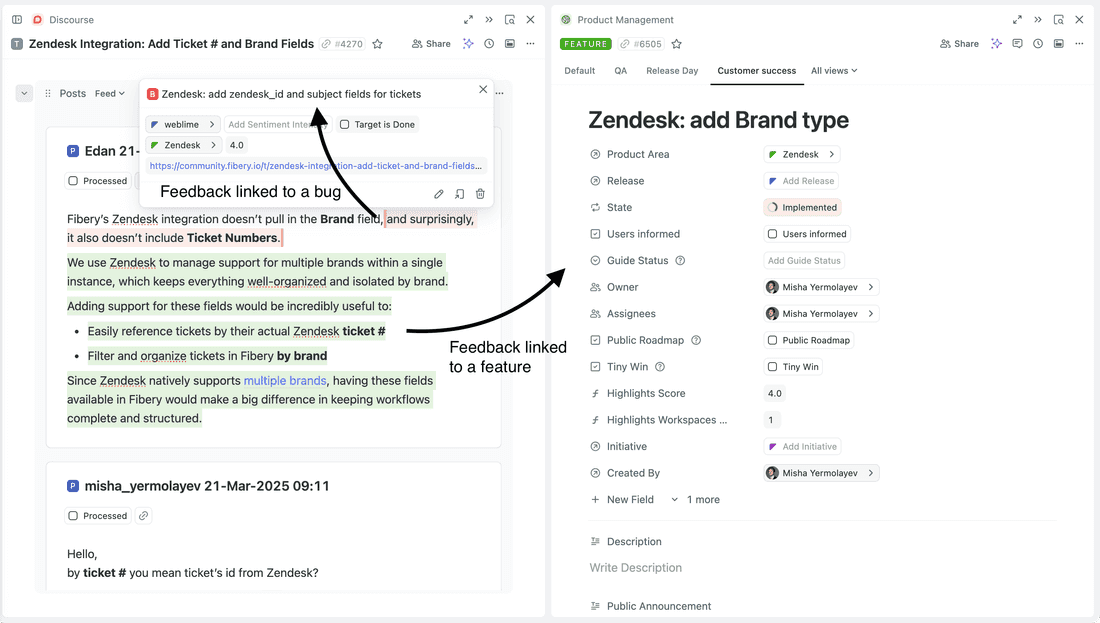
The most important thing is that you can see all linked feedback on the ‘target’ entity. For example, you can open a feature and see all linked feedback with augmented attributes, like customer status, customer size, pain level, etc.
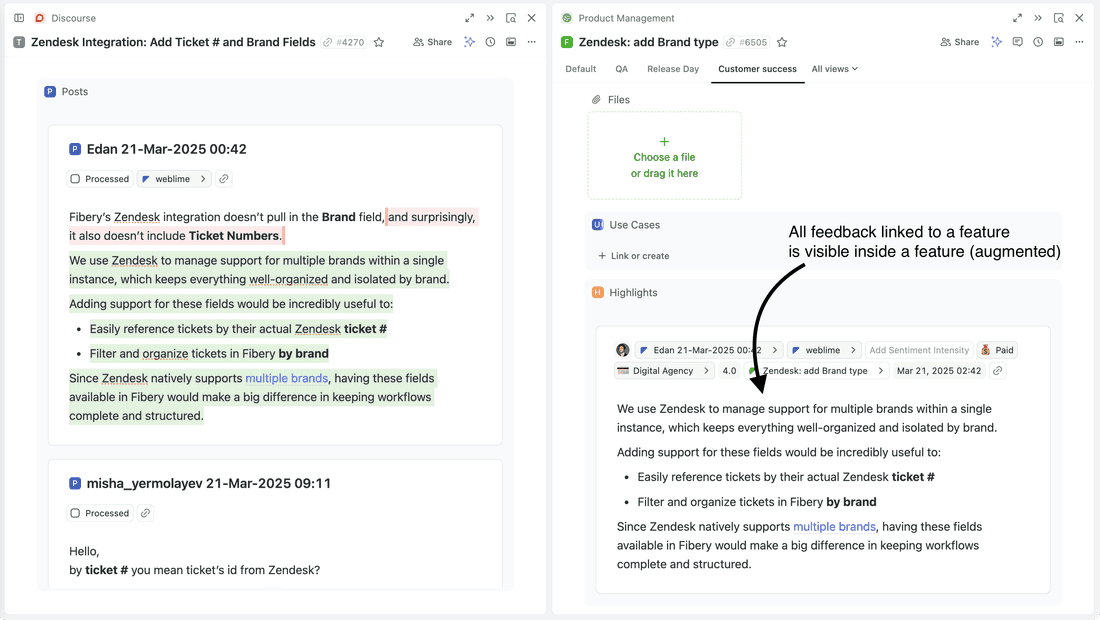
With time you will accumulate thousands of feedback pieces linked to real insights or backlog features, and it will help you to prioritize future development.
Backlog Prioritization
For every feedback piece linked to a feature or to an insight, we can calculate its score. For example, feedback from a target customer is more important, feedback with a high pain level is more important, feedback from a paid customer is more important, etc. When you have this formula, you can calculate total score for every feature and every insight. Prioritization becomes fact-based.
🐼 🔴 In Notion, calculating meaningful scores from feedback attributes is practically impossible, as the relational features and formulas are limited.
Fibery makes prioritization data-driven and precise:
- Each feedback snippet can carry weighted attributes (pain level, customer type, etc.).
- Fibery formulas dynamically calculate total importance scores for each feature.
- Teams instantly understand the highest-impact features to focus on.
For instance, you decided to improve Automations, but what are the most pressing things? You can open Automations product area and clearly see that Validation rules is the most important feature to address.
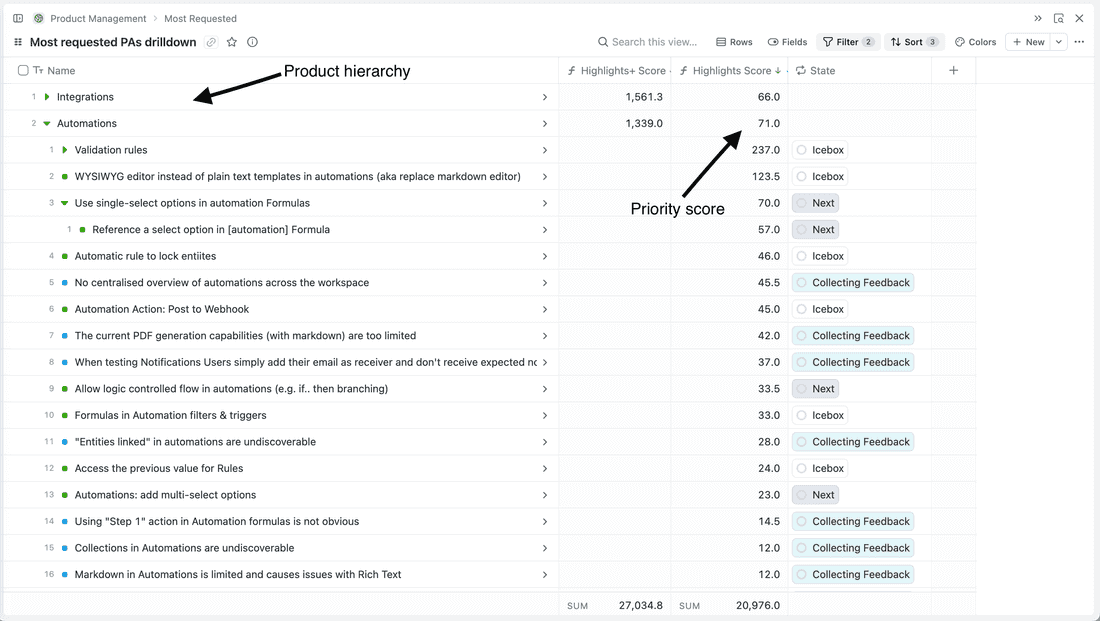
Notion just can’t handle this use case at all. When you can’t link feedback and calculates scores for feedback pieces, you can’t calculate total score for a feature or insight.
Roadmapping
Timeline view in Notion is great and slightly better than in Fibery. It supports grouping better and the view itself is more dense.
In Fibery, the Timeline view is also quite good, you can create roadmaps, set dependencies, edit fields inline and even compare planned and actual dates.
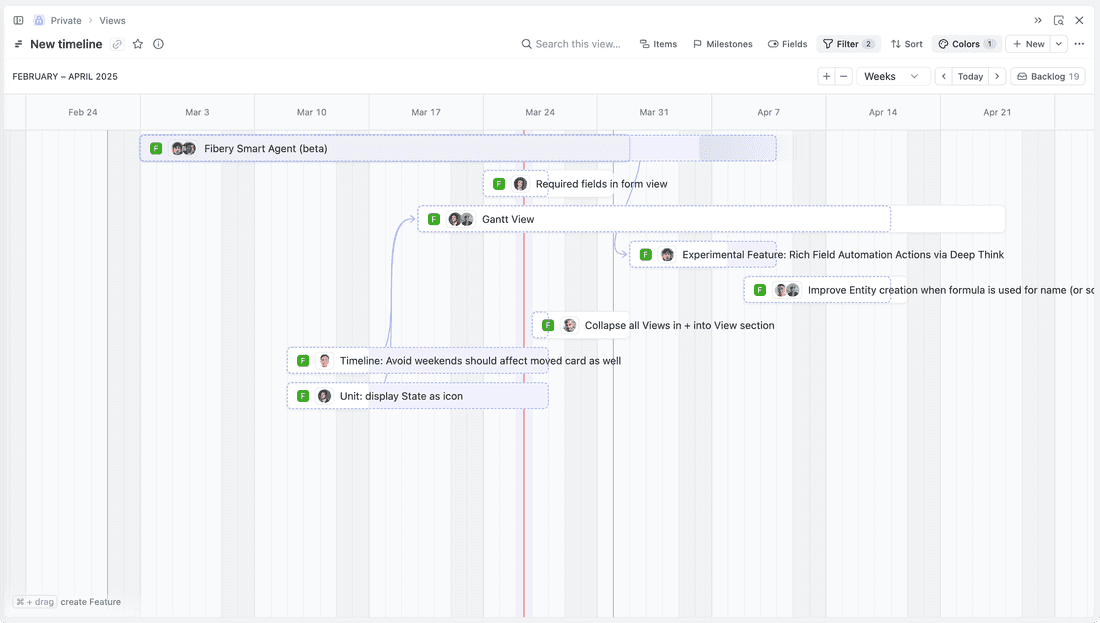
Features specification
Notion works great for features specification, since it has great text editor.
🐼 🟢 Notion has great customizable templates for quickly starting new features, while templates in Fibery are quite quirky.
In Fibery you will not miss much, however. Good references, good comments, good embeds, AI helpers — all are there.
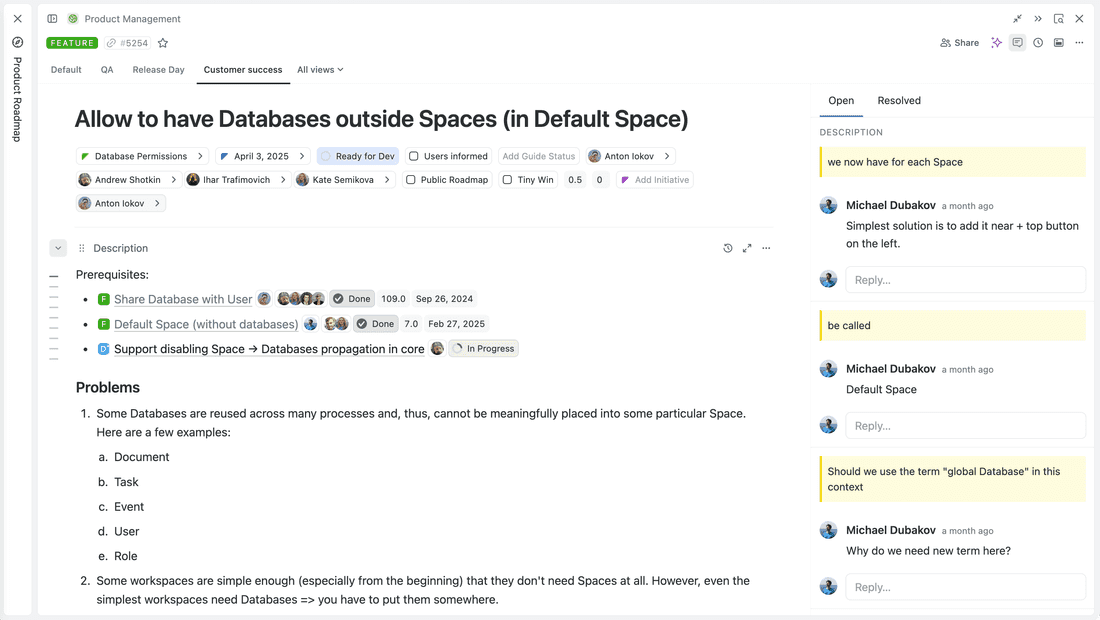
In summary, Notion is great for basic backlog management, roadmapping and writing clear feature specifications due to its excellent text editor and customizable templates. However, it struggles with complex product management tasks like collecting feedback, prioritizing features, and making data-driven decisions. Fibery handles these tasks more effectively.
Notion vs. Fibery quick comparison table
🐼 Where Notion shines
- 👌 Easier to start, good guides, many videos, etc
- 👌 Way better rich text
- 👌 Better aesthetics and polish, all is aligned and looks great
- 👌 Many templates and a template marketplace
- Great Import
- 👌 Mobile app
- Gallery View
- Supports many languages in UI
- Native Calendar and Mail apps
- Better search with more filters
- Very fast
- Templates for databases
- Notion Sites and sharing
🐉 How Fibery is different
- Can handle complex use cases better (product management, company operational system, etc.)
- 👌 Databases with relations and deep hierarchies
- 👌 Can visualize deep hierarchies in views
- 👌 Extremely flexible permissions and access settings
- Panel navigation to explore related entities faster
- Smart Folders to simplify navigation for large groups
- Whiteboards
- Much more powerful charts
- More powerful automations
- More powerful formulas
- Deeper integrations
- Feedback management via Highlights
- 👌 Can handle databases with 300K+ records
Conclusion
🐼 If you’re looking for simplicity, ease of entry, and elegant design for managing personal tasks, lightweight collaboration, or straightforward company documentation, Notion is a fantastic choice in 2025. Its polished UI, rich content blocks, intuitive interactions, great community templates, and extensive third-party ecosystem make it the go-to tool for many individuals and small teams.
🐉 However, if your team’s needs go beyond basic note-taking and simple project tracking—if your processes involve deeply interconnected data, complex hierarchies, advanced permissions, and deep automation—Fibery shines. Its powerful relational databases, advanced visualization options, highly customizable automations, and superior handling of interconnected data offer capabilities that Notion currently struggles to match.
Neither tool is objectively “better.” It’s all about what you need. If you feel you’ve hit a ceiling in Notion—be it performance, complexity, or relationships — Fibery is your logical next step.
Psst... Wanna try Fibery? 👀
Infinitely flexible product discovery & development platform.
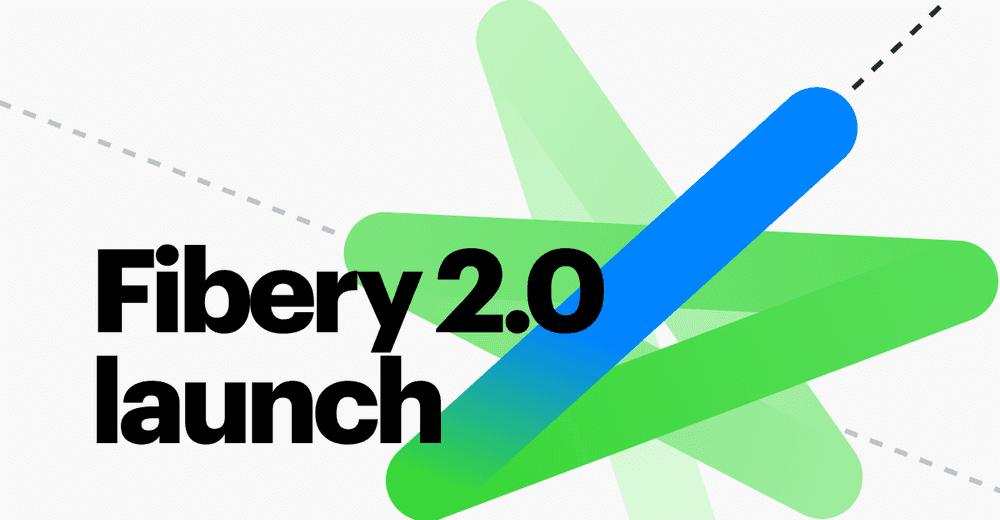

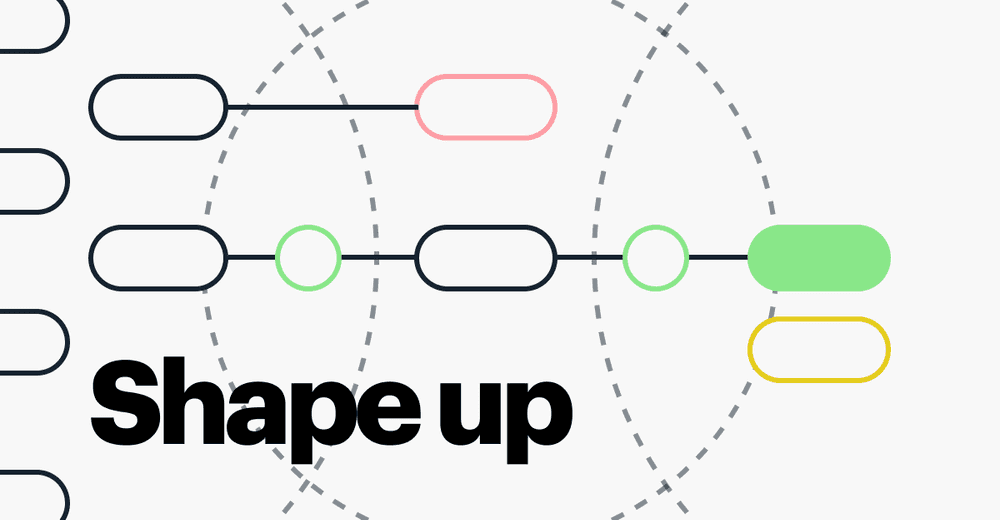
![🍀 'Green grass' products [3/100]](/blog/static/0ec8fab5eac3bb38f0548322cf95b13a/d8027/gg-products.png)